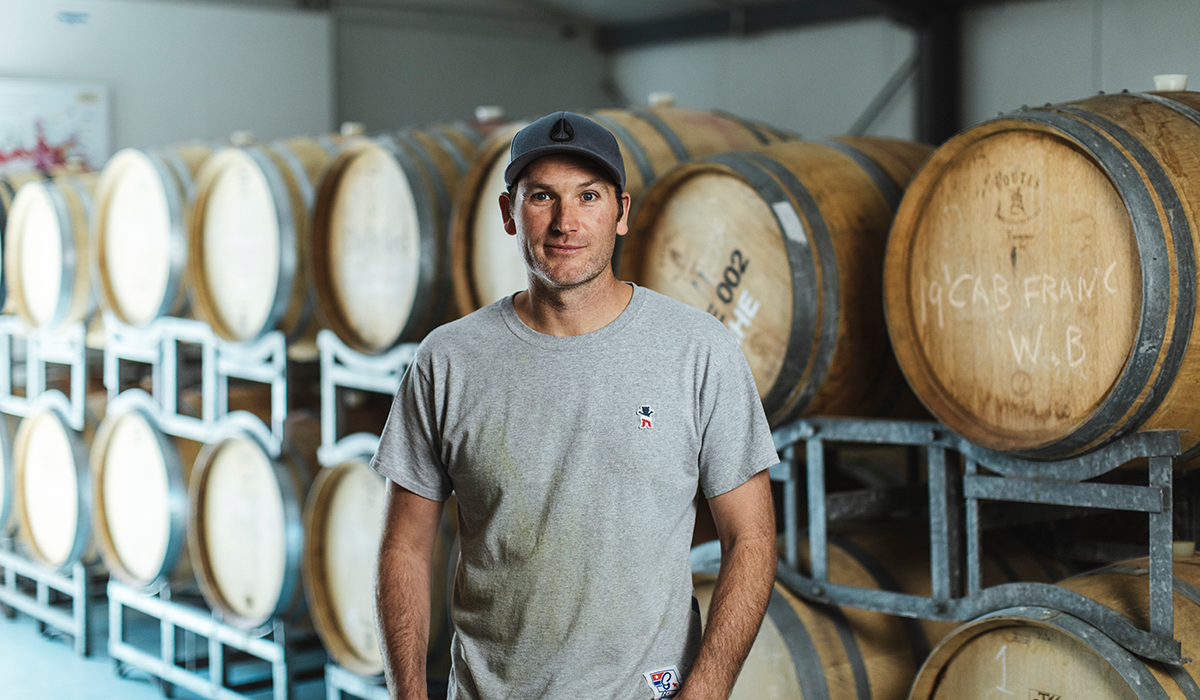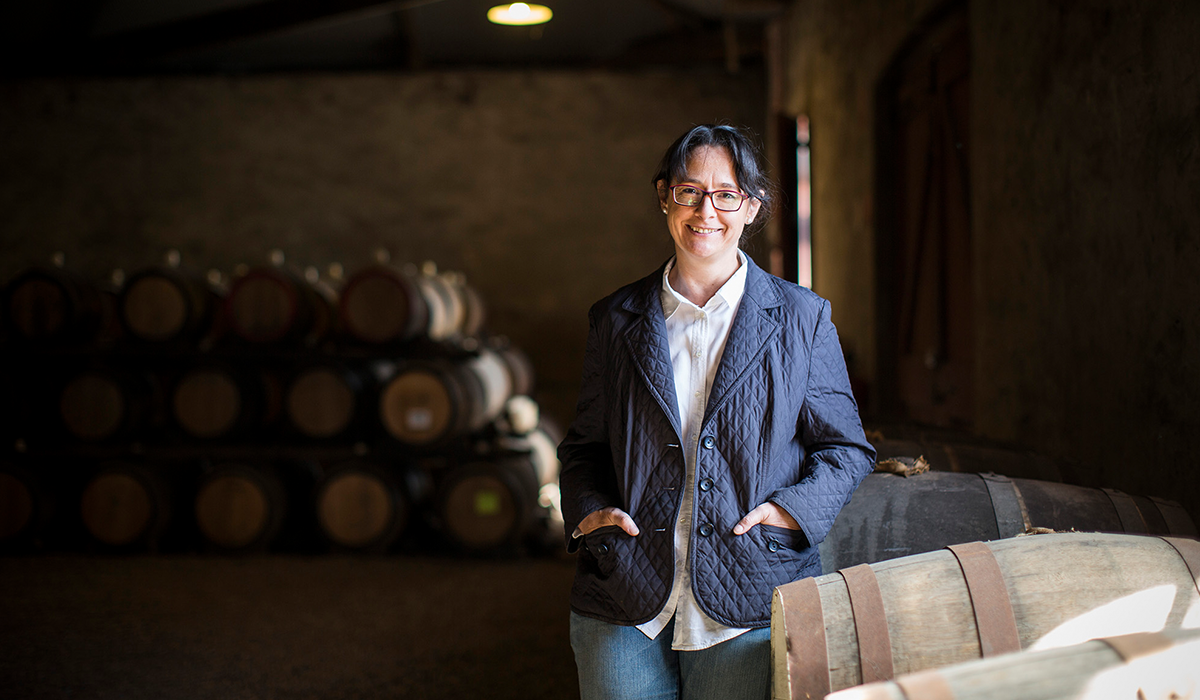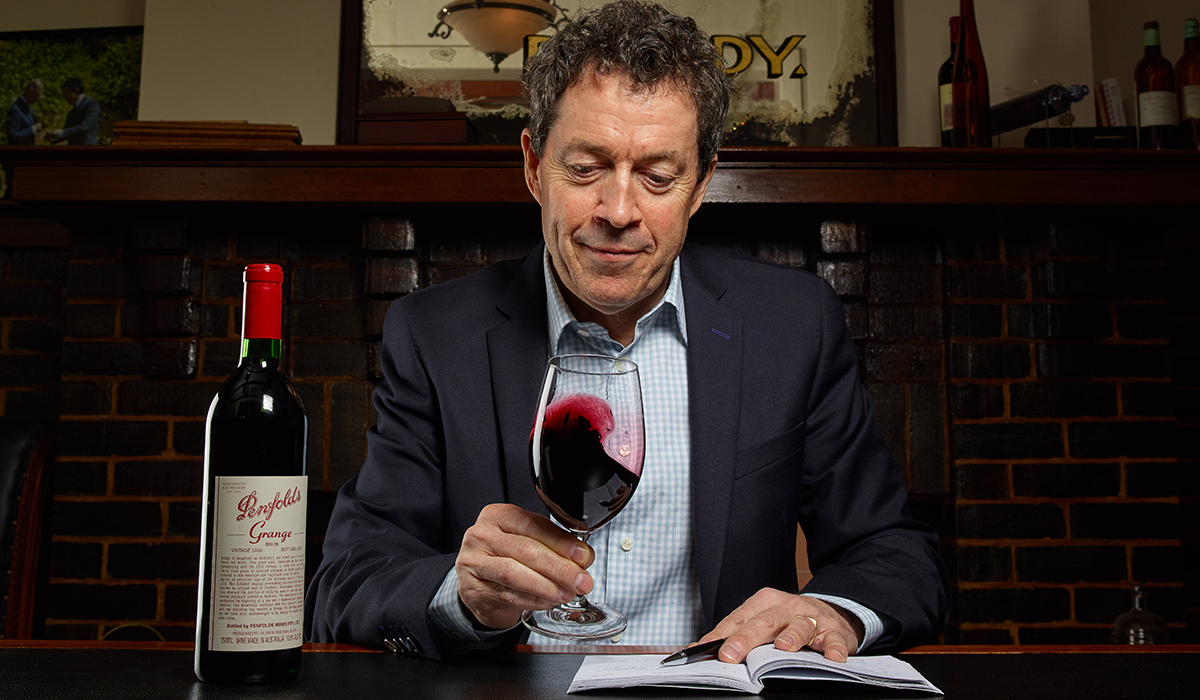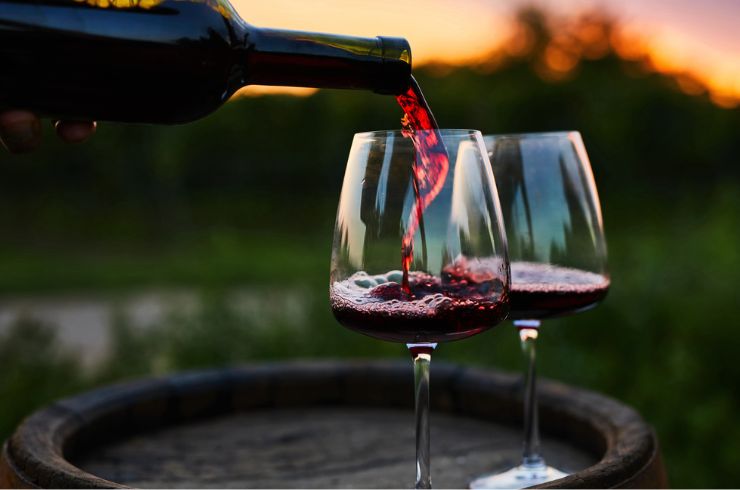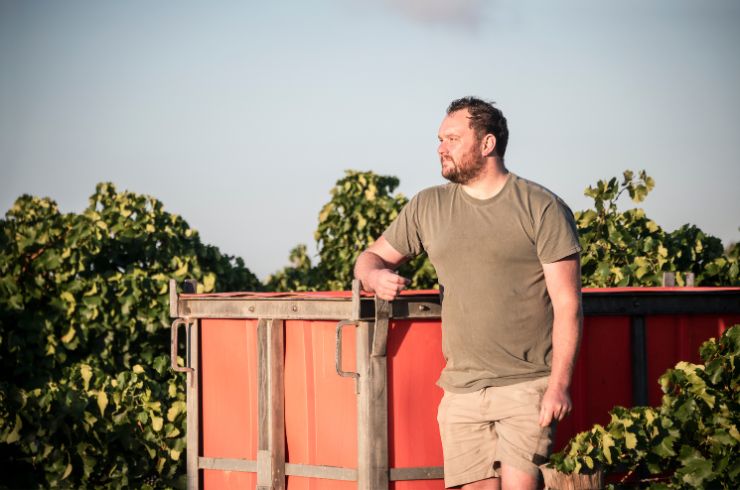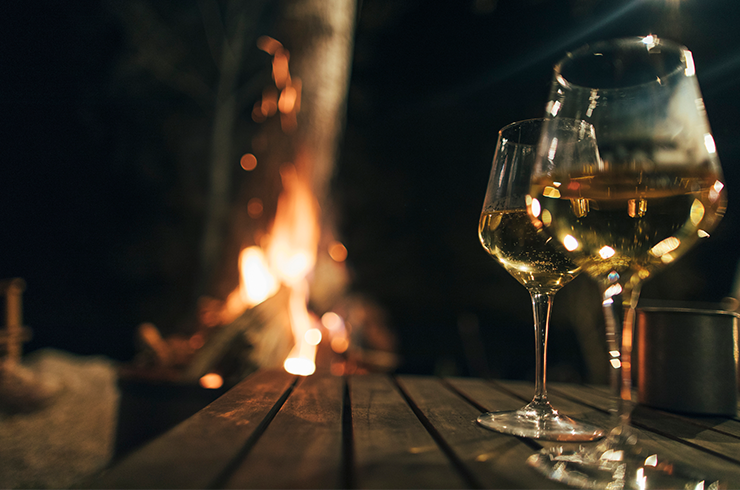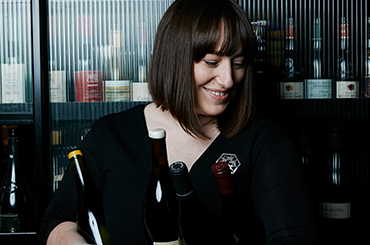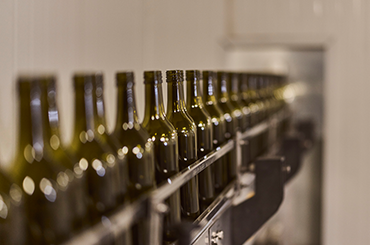Vintage is ‘finals season’ for growers, viticulturalists and winemakers. Teams work toward vintage all year long, and if training goes well, there may even be trophies at the end of it.
Vintage – that period when ripe grapes are harvested from their vines and made into wine – involves long hours, hard labour, and tasks that are months long. But while the goalposts are the same, each winery – from independent négociants to the large, multi-estate brands – has a different approach.
Shaun Crinion | Dappled Wines
Shaun Crinion, owner and winemaker at Yarra Valley’s Dappled Wines, says working in a small winery is hands on, hard work. He buys, rather than grows, his fruit – small parcels of grapes sourced mostly from the Yarra, chosen for their combination of site, clone, vine age and sustainable viticulture.“I’m very hands on at all stages, so just before harvest I’m in the vineyards ensuring the grapes are picked at the absolute optimal time. This is a balancing act between good acidity, flavour, and tannin ripeness. It’s different every year in every site, so vineyard visits are regular, as is sampling for taste and chemical analysis. Everything is handpicked, and then it’s all about respecting each parcel of fruit, keeping the balance of flavours and site characteristics all the way into the finished wine.
“Decisions about whole bunch components, what vessel I’ll use for a particular ferment, and how much lees I’ll include, are made when picking and sorting. It’s always native (wild) yeast, very gentle and long pressings, and foot-stomping reds. I’m meticulous about every little thing in the winery. I like having a small production because I can keep across every detail throughout the process, all the way up to hand bottling and labelling.”
Shaun says not owning his own vineyard can be a challenge, and that as well as low yields, the last few years have been marked by seasonal picking shortages, along with high production costs, including for importing materials including oak, glass, and capsules.
Day to day, Shaun can be found on the tractor picking up chardonnay and recording weighs, and then he’s pressing, racking and transferring white grape juice to French oak for fermentation, before spending time in the lab.
“There’s also the constant monitoring of the ferments that may have already kicked off. Red wine ferments need to be hand plunged up to four times a day and whole bunch ferments need to be foot-stomped daily. Once the ferments are done and they’re all resting in barrels, it’s usually time for a holiday!”
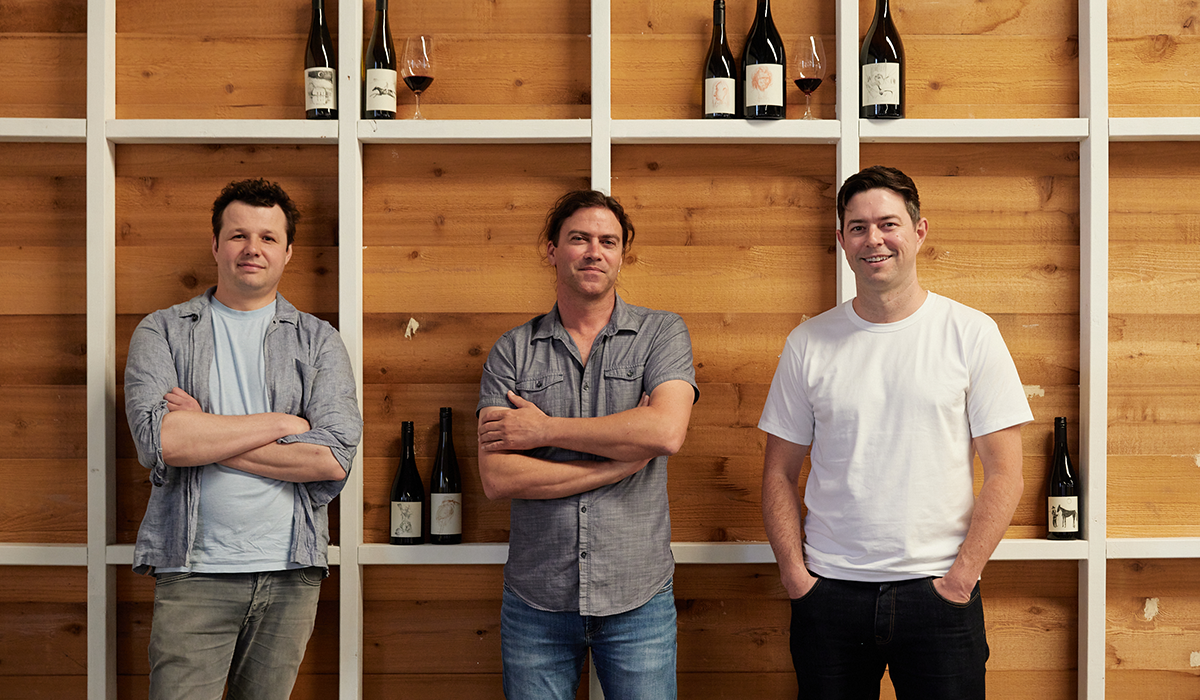
Lance Parkin and Kris Ambrozkiewicz | Battles Wine
When Lance Parkin and Kris Ambrozkiewicz got the call last year to say their sold-out shiraz had won Shiraz of the Year at the Halliday Wine Companion Awards, Kris jumped in the car and travelled around Western Australia trying to buy some of it back. It’s a story that demonstrates just how little volume Battles Wine produces, but, more than that, how in-demand their wines are.Lance and Kris launched Battles in 2019. Lance is the winemaker (prior to Battles he was a winemaker at Houghton Wines for 14 years) and Kris (or Ambro) is a sommelier and in charge of sales. Kris, who left the wine industry as a full-time employee back in 2013, has spent time at St Hallett in the Barossa, New Zealand’s TeMata Wines, Covey Run in Washington, and was assistant winemaker at Cumulus Wines before coming home to Perth as a winemaker for Western Range Wines. The two enlist the help of their “glue man” Richard Healy, who is currently heading up Neil Perry’s wine program at Margaret in Double Bay.
Battles sources grapes from right across Western Australia: Perth Hills, Margaret River, Geographe and Great Southern. “Our northern vineyard up in Chittering, that’s the one we have to be the most involved in because that’s all handpicked from that vineyard, so it involves both of us being there,” says Kris.
Lance will do a vineyard check in December, before things kick off in earnest in January. “I start going to all the vineyards and just watch as the grapes ripen, taste, and then sample, and then book in picks…once you start picking, that’s when it gets exciting, especially if the fruit quality is there. There’s a lot of work that goes in pre-harvest. It’s really hot in the vineyard, so it’s really tough work, but once you start picking, all that hard work pays off and it does get exciting.”
Kris, who leaves most of the harvesting decisions to Lance, says they’ve had a pretty good start to the year, yields are strong, and they’re in for a smart vintage. “I always get a little kick out of vintage. But it’s a hard slog for the few months. Unlike a winery that’s in one region, sourcing from that one region, we’ve got quite a stretched-out harvest.
“There are certain varieties you’re always thinking about, and all the different plots of fruit, and now we’ve cemented a guaranteed supply, it’s nice to hone in on what we’re doing. I think that’s where there’s a little bit of excitement. How do we keep making these wines better and what options are there?”
Louisa Rose | Yalumba
“Vintage is the time when you get to do all the creative stuff for the rest of the year and actually for the years to come,” says Louisa Rose, head of winemaking at Hill-Smith Family Estates.“It’s a time when the stories are being written – that you’re then going to talk about until those wines are no longer.”
For Yalumba in the Eden Valley, which is marking its 174th year, the growing/buying split is 30/70. Louisa says the growers are so important to the wider Yalumba family. “They’re all sorts of family growers and many of them have been growing for years, if not decades, if not generations.”
While the majority of Yalumba’s grapes are machine-picked, the team hand-pick the old vines – particularly shiraz and grenache – along with the premium blocks, such as the viognier destined for The Virgilius.
The winery runs 24/7, and while each day is different, Louisa will always taste all the ferments and make any decisions that need to be made for the wines that are changing quickly. “Fermentation is the time when so many things go right but it’s also when potentially things can go wrong, so timeliness is really important.”
When she's not in the winery, Louisa is in the vineyards, making the most important decision that a winemaker makes any year, for any wine: when to pick the grapes. In between, she’s looking after logistics, managing people and processes. “And tasting with the rest of the winemaking team and trying to make sure that we’re making enough of every wine and balancing supply and demand.”
Liam McElhinney | Lowestoft
Liam McElhinney is chief winemaker at Fogarty Wine Group’s Lowestoft in Tasmania. He’s also the chief winemaker for Fogarty’s other Tassie labels: Tasmanian Vintners, Strelley Farm Estate, and Thalia, and he still manages to find time for his own label, OSSA Wines.The Lowestoft vineyard – three hectares all planted to pinot noir – sits in the lower Derwent. Liam says the team will do four or five picks from that site. “There’s quite a bit of diversity with the ripening evolution on that block…it’s a really small, intensely planted block that requires a lot of human input and is all hand-harvested.” Lowestoft’s chardonnay is sourced from the Coal Valley and Tasmania's East Coast.
During the peak of harvest, the winery operates 24 hours a day and is split into two or three shifts. “If we’re not crushing it, we’re tasting it, monitoring it, or moving it. And once we get the first 20 per cent of harvest in the door, the combination of fruit receival, ferment monitoring, daily operations, vineyard visits, fruit tasting, and planning is a huge one.”
“It’s that crystal-balling, talking to viticulturalists, looking at the weather, and looking at what’s coming into the window of being ready to pick, being flexible and adapting to change. That’s the big one – having plan A, B, C, and D so that if we do have to pivot, we’ve got the pieces in play to pivot well and pull another parcel in.”
Liam says Lowestoft hasn’t been immune to challenges, especially when it comes to labour. “It has been one of the defining factors of the past three harvests – having enough labour to get grapes off when you want to.”
Chardonnay is going to bottle as we speak, and Liam is really excited about the recent addition of the sparkling range – a NV reserve brut, a vintage rosé, and a grand reserve – to the Lowestoft portfolio.
Peter Gago | Penfolds
The most common question asked of Peter Gago, a pillar of the Penfolds winemaking team for over 30 years, is: ‘What do you want Penfolds to be?’ His reply may surprise you: “The world’s biggest boutique winery.”At the time of this interview, Peter is about to board a plane to California, before heading to France, to do classification tastings of the wines Penfolds now produces in the northern hemisphere.
For Penfolds, and for Peter, harvest is more of a continuum, rather than a finite number of days or weeks. “For us, harvest starts for whites late January, and for reds it might finish early May. That’s here in the southern hemisphere, but we also have to manage winemakers from Penfolds who are on the ground in France and America, for the second harvest.
“Immediately following harvest, and quite often even when the odd ferment is still ticking, we gather all the wines made, whether they be in barrel or in tank, and we organoleptically blind assess them all and then put the different blends. To me, that classification tasting is as much part of harvest and vintage as is picking the grapes.”
Peter says that with so many moving parts around the globe at Penfolds, one person can’t be everywhere. “That’s why we have this very important thing, and it’s the most important thing at Penfolds, the Penfolds winemaking team, and the mentorship, the relationships and the interaction. It’s the only way we can get anything done during harvest, whether that house is here or in Champagne or Bordeaux or the Napa Valley or Paso Robles. Keeping this whole shooting match together is logistically quite challenging, and it’s something that a lot of wineries don’t have to confront.”
In between classification tasting, Peter will launch the new V Chardonnay by Penfolds – five vintages of chardonnay in one (which has never been done before) – in Paris. And once he’s back it’s off the plane and straight onto the earth, looking at and assessing vineyards in the viticultural regions of Coonawarra, Robe, Wrattonbully and Padthaway in South Australia’s southeast.
Along with its own vineyards and vineyard managers, Penfolds has also implemented the role of grower liaison officers (or GLOs) who work with and advise growers year-round. Peter says having the ability to grow and buy grapes is also about managing risk. “The grower relationship isn’t one of master and servant, we work actively with them. It’s in our interest that their fruit is better...they get more money, we get more A-grade fruit – it’s win-win. That’s what true business is all about.”
This article appears in issue #69 of Halliday magazine. Become a member to receive the print publication as well as digital access.
Latest Articles
-
Wine Lists
The best Australian red wines under $30
16 hours ago -
News
Carte blanche and a blank cheque: Mark Smith's ultimate wine list
1 day ago -
News
Grenache guru Mark Bulman has released his outstanding 2024 vintage wines
3 Jul 2025 -
Wine Lists
25 gold medal white wines that are perfect for winter
3 Jul 2025
